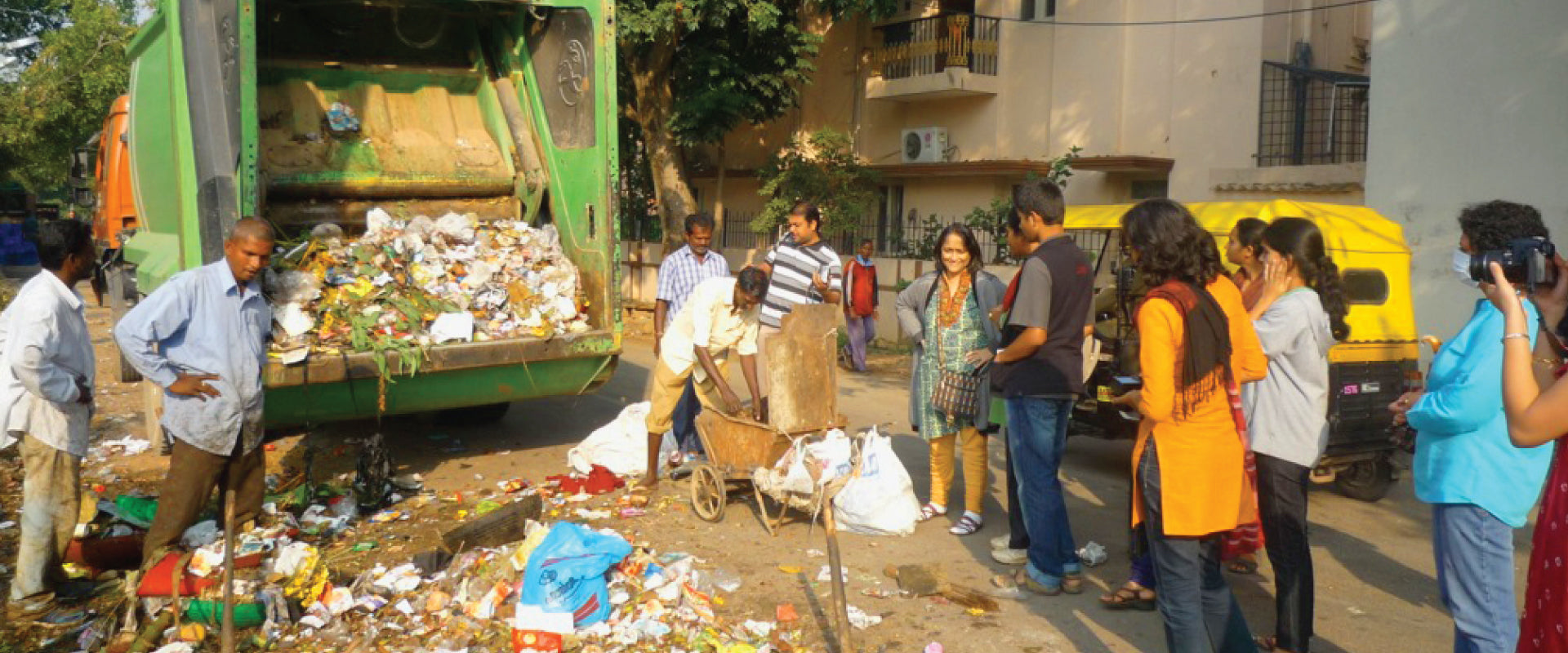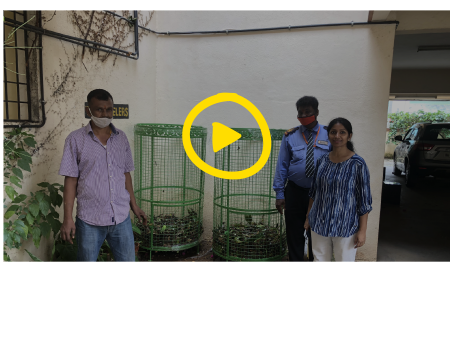Waste is Beautiful | Why Daily Dump thinks so

Ask around and you are likely to get the word “waste” associated with the word ugly, yucky, disgusting.
These are the usual perceptions and unfortunately in India we have another dimension too – class. If you are in your own mind a person who is “doing well in life”, then being involved with your dustbin is really not your thing. In fact often, you don’t know what goes in your bin and what happens to it after it leaves your home. You are relieved that your garbage is gone. Admit it, that job is “beneath” you, yes its not right to say it in polite society, but really that is one simple deep rooted belief that is quite universal.
So of course waste is not high on the list of dinner party conversations.
Enter the Swacch Bharat program (a new name for the older governments’ Total Sanitation Project).
Every corporate and politician is now mouthing these terms and while there is a general heightened awareness there is also a sense of uncertainty. Should we build more waste to energy plants, or build landfills or invest in mechanised sorting plants or should we create more jobs through waste recovery?
The questions are usually around things that we know, waste is carried away, waste is processed, waste should be hidden, waste needs infrastructure and so on. Governments don’t think that money needs to be spent of nudging new social norms through legislation, communication and incentives. Their argument is that we do not have the time to make that change happen, so might as well try something that has a promise of immediate resolution. Most of the decision makers cannot believe that the idea of waste in its current form shapes us as much as we try and shape it.

Why can’t we appreciate that this “way of seeing waste” is the problem? Unless we care an awful lot of how we perceive our resources, we will continue bringing this short-sighted approach to this issue. We will communicate the incorrect vision of what we need to do and create more problems than solve them. We will also do our next generation a big dis-service by creating cities that pick up poison, process poison and manage poison instead of nutrition. Why do I say poison? Well, mixed waste is just that, poison. When we mix vegetables with sanitary napkins in one plastic bag and throw it out and expect the city to pick it up and take it far away and dump it, we are packing, throwing, hauling and dumping poison. And cities continue to invest their money in systems that do just this, maybe more efficiently but often at much more cost.

I began with the question -”Why do we despise our garbage so much? Why do we inherently tuck away waste in areas out of sight, hidden, dark, dirty, or just plain boring! And why is it ok to chuck it outside our homes, in public spaces and not inside our homes?”
We want everything around us to be beautiful. Our house is not just house, it is home, adorned with lovely interiors, set-up and cared for with a lot of love. But that one corner, where the dustbin lies, is the most neglected one. It is our mind-set to ignore that corner. “It is waste after-all, what can be done there?”
This is where Daily Dump believes efforts need to be directed if we are going to even scratch the surface of the problem (and problem it is, it is a unseen poison that we cannot see which is destroying our water, land and air). We talk about how waste is useful, even beautiful and life giving; we make products, do demos and share stories in which we urge our audience to challenge their perceptions of waste. We pay attention to what we say about waste how we say it and how we make waste understandable. We want the ritual of waste handling to be fulfilling and imbued with meaning. This matters to us, because we believe it is the key to get our audience to see “waste” differently. This for us will bring about the much-needed shift in mind-sets around waste.
Our principles of beauty are:
Make waste visible, not out of sight out of mind.
Make it useful, encourage principles of social, environmental and ecological connections
Make waste decentralised in practice
Make waste into resource.
Make waste beautiful to look at, something that you want to be proud of, to be celebrated and to be engaged with.
So what happens when we do this?
Over the past 9 years:
- We have set the ball rolling in the direction of Waste as pride. Waste being visible and not out of sight out of mind. Waste not being something to be ashamed of. Our customers all tell us that they feel incredibly proud that they can show off their beautiful composter in their main balconies or gardens. They say that because the products are lovely to look at and contribute to the enhanced livelihoods of potters, they have a relationship with the composter that they do not have with perhaps their other products at home, like the refrigerator, or TV.
- Our customers also say that the product is something they enjoy using, so the engagement of waste is not seen as “not my job”. And if we can continue breaking down the class barrier in waste, it is a direction we want to grow. It brings dignity to the simple job of looking after resources well. While there is a long way to go on that one, our biggest feather in the cap happened when a maid told her boss to come and buy the Kambha because she thought it was a good product to manage kitchen waste. And the boss listened!
- Our customers also are able to appreciate the radical transparency that we demonstrate in our communication. While they all may not agree with the importance of maggots or lizards in the composting process they do enjoy our fun visuals and well designed diagrams.
- Our competitors have said they have been inspired by our vision, our product design and our commitment to making waste beautiful. They say that our vocabulary and customer insights have helped them articulate their positions. So we have opened up a market that did not exist before.
- And most importantly the practice of managing waste at source, of making waste visible and beautiful is something that is being transmitted to the next generation. When they see their parents, their teachers and the community making this the default option only then will they continue and grow the “cleaning up” mission.
For us the rhythm of natural cycles, the face that nature has no waste, the throbbing life force of composting all inspire us to see the beauty in the idea of “waste”.
It makes us want to do much more and there is no doubt in our minds that if we continue making waste “beautiful”, “meaningful”, we will come closer to understanding on how to make the planet a better place daily. For us perceptions and mind-sets are at the core of this issue as much as technology and legislation.

I would like to end by sharing an example in Denmark of a “beautiful” waste to energy plant (Utility called Amager Bakke) they are commissioning in 2017. While personally I do not know enough to take a position about whether the technology is suited to our context or not, I still think you will enjoy the debate and challenges and the final plant design in the context of the waste is beautiful discussions.
Poonam Bir Kasturi
September 7th 2015
Want to try composting? Give us a shout
hello@dailydump.org | 9916426661




